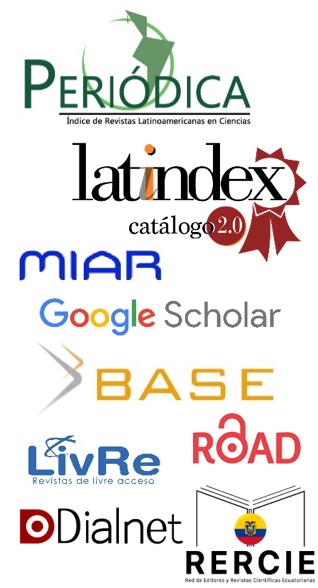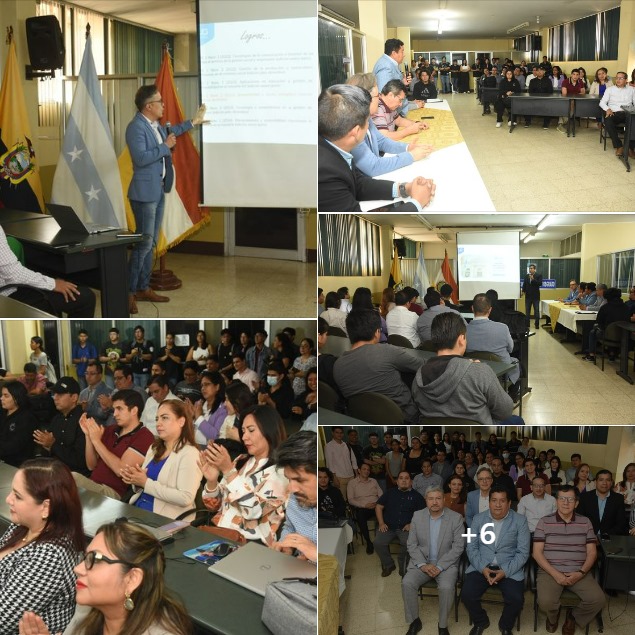Segmentacion de mercado de servicios en contexto B2B
DOI:
https://doi.org/10.53591/easi.v3i1.0070Palabras clave:
B2B, segmentacio´n de mercados, mercados industrialesResumen
La segmentación de mercados industriales es una estrategia y un desafío clave para el área de marketing. Más de 40 años de estudio y no se han producido pautas para definir segmentos de mercados B2B contundentes; han sido pocos los estudios que han probado empíricamente el impacto de la segmentación. El presente estudio une esfuerzos previos a través de una revisión narrativa de la literatura, analizando 25 artículos relacionados en marketing B2B. Se desarrolla una investigación de tres etapas, compuesta por: (1) Estado del arte de segmentación B2B, (2) El proceso de segmentación en empresas de servicios y (3) conclusiones sobre el proceso de segmentación. Los autores citados realizaron sus investigaciones académicas durante el periodo 1983-2021 y proponen ampliar la visión de la segmentación de mercado de empresas de servicios como un proceso continuo. Los especialistas en marketing de servicios pueden adoptar cuatro actividades para segmentar mercados de servicios: (1) presegmentación, (2) segmentación, (3) implementación y (4) evaluación. Finalmente, se identificaron varios vacíos y se ofrece una pequeña sugerencia de agenda de investigación orientada a la práctica.
Citas
Abratt, R. (1993). Market segmentation practices of industrial marketers. Industrial Marketing Management, 22(2), 79-84. doi: 10.1016/0019-8501(93)90033-4
Boejgaard, J., & Ellegaard, C. (2010). Unfolding implementation in industrial market segmentation. Industrial Marketing Management, 39(8), 1291-1299. (Building, Implementing, and Managing Brand Equity in Business Markets) doi: 10.1016/j.indmarman.2010.06.004
Bolton, R. N., & Myers, M. B. (2003). Price-based global market segmentation for services. Journal of Marketing, 67(3), 108-128. https://doi.org/ 10.1509/jmkg.67.3.108.18655.
Bommert, A., Sun, X., Bischl, B., Rahnenfuhrer, J., & Lang, M. (2020). Benchmark for filter methods for feature ¨ selection in high-dimensional classification data. Computational Statistics & Data Analysis, 143, 106839. doi: https://doi.org/10.1016/j.csda.2019.106839.
Clabaugh, E. K. (2021). The paratext in the age of its technological reproducibility: Examining paratextuality in modern mass media. Film, Media & Theatre Dissertations, 14. https://doi.org/10.57709/22497284.
Clarke, A. H. (2009). Bridging industrial segmentation theory and practice. Journal of Business-to-Business Marketing, 16, 343 - 373. https://doi.org/10.1080/10517120902762427.
Cortez, R. M., Clarke, A. H., & Freytag, P. V. (2021). B2b market segmentation: A systematic review and research agenda. Journal of Business Research, 126, 415-428. https://doi.org/10.1016/j.jbusres.2020.12.070.
Dibb, S., & Simkin, L. (2001, November). Market segmentation: Diagnosing and treating the barriers. Industrial Marketing Management, 30(8), 609–625. https://doi.org/10.1016/S0019-8501(99)00127-3.
Dibb, S., & Simkin, L. (2009, 04). Implementation rules to bridge the theory/practice divide in market segmentation. Journal of Marketing Management, 25. https://doi.org/10.1362/026725709X429809.
Fandos-Roig, J. C., Sanchez-Garc ´ ´ıa, J., Tena-Monferrer, S., & Callarisa-Fiol, L. J. (2021). Does csr help to retain customers in a service company? Sustainability, 13(1). https://doi.org/10.3390/su13010300.
Freytag, P. V., & Clarke, A. H. (2001). Business to business market segmentation. Industrial Marketing Management, 30(6), 473-486. https://doi.org/10.1016/S0019-8501(99)00103-0.
Fuentealba, D., Flores-Fernandez, C., & Carrasco, R. (2023, abr.). Análisis bibliométrico y de contenido sobre ´ Vuca. Revista Española de Documentación Científica, 46(2), e354. https://doi.org/10.3989/redc.2023.2.1968.
Gordon, G. L., Calantone, R., & Benedetto, C. A. D. (1993). Business-to-business service marketing: How does it differ from business-to-business product marketing? Journal of Business & Industrial Marketing, 8, 45-57.
Gordon, G., Calantone, R. & Di Benedetto, A.. (1993). Business-to-Business Service Marketing: How Does it Differ from Business-to-Business Product Marketing?. Journal of Business and Industrial Marketing, Vol. 8, No. 1, pp. 45–57. https://ssrn.com/abstract=2011977.
Hadjikhani, A., & Laplaca, P. J. (2013). Development of b 2 b marketing theory. Industrial Marketing Management. 42(3), 294-305. https://doi.org/10.1016/j.indmarman.2013.03.011.
Heffner, C. C., Newman, R. S., & Idsardi, W. J. (2017). Support for context effects on segmentation and segments depends on the context. Attention, Perception, & Psychophysics, 79, 964–988. https://doi.org/10.3758/s13414-016.
Hlavacek, J. D., & Reddy, N. (2013). Identifying and qualifying industrial market segments. Marketing Intelligence & Planning, 3(1). 41-56. https://doi.org/10.1108/eb045709.
Lilien, G. L. (2016). The b2b knowledge gap. International Journal of Research in Marketing, 33(3), 543-556. https://doi.org/10.1016/j.ijresmar.2016.01.003.
Mark, T., Niraj, R., & Dawar, N. (2012). Uncovering customer profitability segments for business customers. Journal of Business-to-business Marketing, 19, 1-32. https://doi.org/10.1080/1051712X.2011.593022.
Moon, S., Jalali, N., & Erevelles, S. (2021). Segmentation of both reviewers and businesses on social media. Journal of Retailing and Consumer Services, 61, 102524. https://doi.org/10.1016/j.jretconser.2021.102524.
Mora Cortez, R., & Johnston, W. J. (2018). Needed b2b marketing capabilities: Insights from the usa and
emerging latin america. International Business Review, 27(3), 594-609. https://doi.org/10.1016/j.ibusrev.2017.10.008.
Morgan, N. A., Whitler, K. A., Feng, H., & Chari, S. (2018). Research in marketing strategy. Journal of the Academy of Marketing Science, 47, 4-29. https://doi.org/10.1007/s11747-018-0598-1.
O’Brien, M., Liu, Y., Chen, H., & Lusch, R. (2020). Gaining insight to b2b relationships through new segmentation approaches: Not all relationships are equal. Expert Systems with Applications, 161, 113767. https://doi.org/10.1016/j.eswa.2020.113767.
Panagopoulos, N., & Avlonitis, G. (2009). Performance implications of sales strategy: The moderating effects of leadership and environment. International Journal of Research in Marketing, 27, 46-57. https://doi.org/10.1016/j.ijresmar.2009.11.001.
Powers, T., & Sterling, J. (2008). Segmenting business-to-business markets: A micro-macro linking methodology. Journal of Business & Industrial Marketing, 23, 170-177. https://doi.org/10.1108/08858620810858436.
Purnomo, Y. J. (2023). Digital marketing strategy to increase sales conversion on e-commerce platforms. Journal of Contemporary Administration and Management (ADMAN), 1(2), 54–62. https://doi.org/10.61100/adman.v1i2.23.
Ritter, T., & Pedersen, C. L. (2020). Analyzing the impact of the coronavirus crisis on business models. Industrial Marketing Management, 88, 214-224.https://doi.org/10.1016/j.indmarman.2020.05.014.
Sheikh, A. Y., Ghanbarpour, T., & Gholamiangonabadi, D. (2019). A preliminary study of fintech industry: A two-stage clustering analysis for customer segmentation in the b2b setting. Journal of Business-to-Business Marketing, 197 - 207. https://doi.org/10.1080/1051712X.2019.1603420.
Simkin, L. (2008). Achieving market segmentation from b2b sectorization. Journal of Business & Industrial Marketing, 23, 464-474. https://doi.org/10.1108/08858620810901220.
Steenkamp, J.-B. E., & Ter Hofstede, F. (2002). International market segmentation: issues and perspectives. International Journal of Research in Marketing, 19(3), 185-213. https://doi.org/10.1016/S0167-8116(02)00076-9.
Tsao, Y.-C., Raj, P. V. P., & Yu, V. (2019). Product substitution in different weights and brands considering customer segmentation and panic buying behavior. Industrial Marketing Management, 77, 209-220. https://doi.org/10.1016/j.indmarman.2018.09.004.
Wind, Y., & Cardozo, R. N. (1974). Industrial market segmentation. Industrial Marketing Management, 3(3), 153-165. https://doi.org/10.1016/0019-8501(74)90025-X
Wind, Y., & Thomas, R. J. (1984). Segmenting industrial markets. In A. G. Woodside (Ed.), Advance in business marketing and purchasing (Vol. 6, p. 59-82). JAI Press Inc. https://www.researchgate.net/publication/260248618_Segmenting_Industrial_Markets.
Windler, K., Juttner, U., Michel, S., Maklan, S., & Macdonald, E. K. (2017). Identifying the right solution ¨ customers: A managerial methodology. Industrial Marketing Management, 60, 173-186. https://doi.org/10.1016/ j.indmarman.2016.03.004.
Zeng, F., Yang, Z., Li, Y., & Fam, K.-S. (2011). Small business industrial buyers’ price sensitivity: Do service quality dimensions matter in business markets? Industrial Marketing Management, 40(3), 395-404. https://doi.org/10.1016/j.indmarman.2010.08.008.
Publicado
Cómo citar
Número
Sección
Licencia
Derechos de autor 2024 Cristobal Reyes-Aliaga, Eva Orellana, Tirza Gonzalez-Peña, Alejandro Álvarez, Raúl Carrasco

Esta obra está bajo una licencia internacional Creative Commons Atribución-NoComercial-SinDerivadas 4.0.
Las contribuciones publicadas en la revista EASI se rigen por la licencia de acceso abierto CC BY-NC-ND 4.0 (Creative Commons Reconocimiento-NoComercial-SinDerivadas 4.0). Esta licencia te empodera como autor, y garantiza la amplia difusión de tu investigación mientras protege tus derechos.
Para autores:
- Los autores pueden reproducir y distribuir la obra en cualquier formato no comercial, siempre que la obra indique los autores y datos de la revista EASI, y no contravenga los puntos mencionados en el apartado de los permisos y prácticas editoriales.
- La revista obtiene una licencia para publicar y distribuir el manuscrito original.
Para lectores/usuarios:
Acceso y distribución gratuita: cualquier lector o usuario puede acceder, descargar, copiar, imprimir y compartir el artículo publicado libremente según los términos de la licencia CC BY-NC-ND 4.0.
Reconocimiento obligatorio: si un tercero utiliza el material publicado, debe dar crédito al creador proporcionando el nombre, el título del artículo y el nombre de la revista, lo que garantiza la propiedad intelectual del autor(es) y ayuda a construir su reputación académica.
Uso no comercial: solo se permite el uso no comercial del trabajo publicado. No comercial significa que no está destinado principalmente ni dirigido al aprovechamiento comercial o la compensación monetaria por parte de ningún tercero.
No se permiten modificaciones: el contenido del artículo publicado no se puede cambiar, mezclar o reconstruir a partir del trabajo del autor. Esto asegura la integridad y precisión de los resultados de la investigación.




